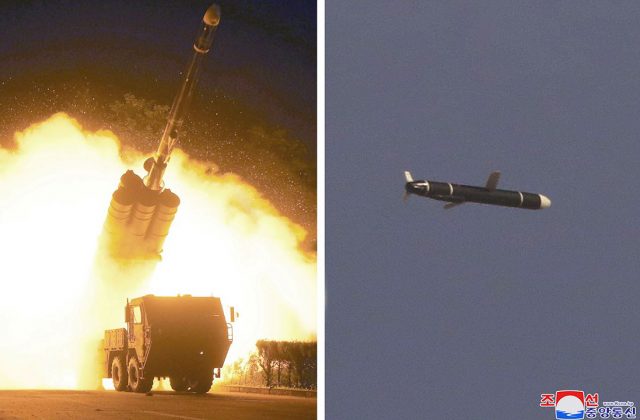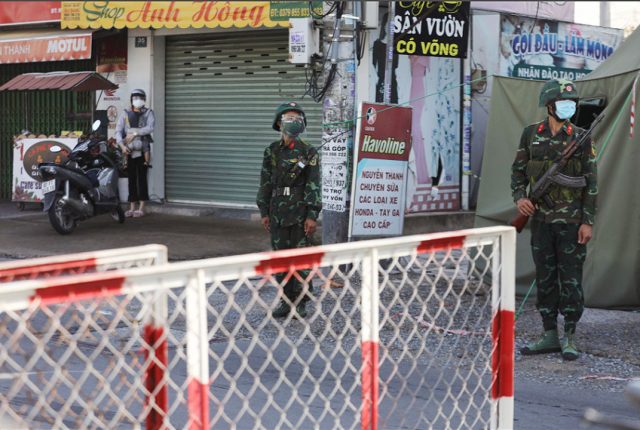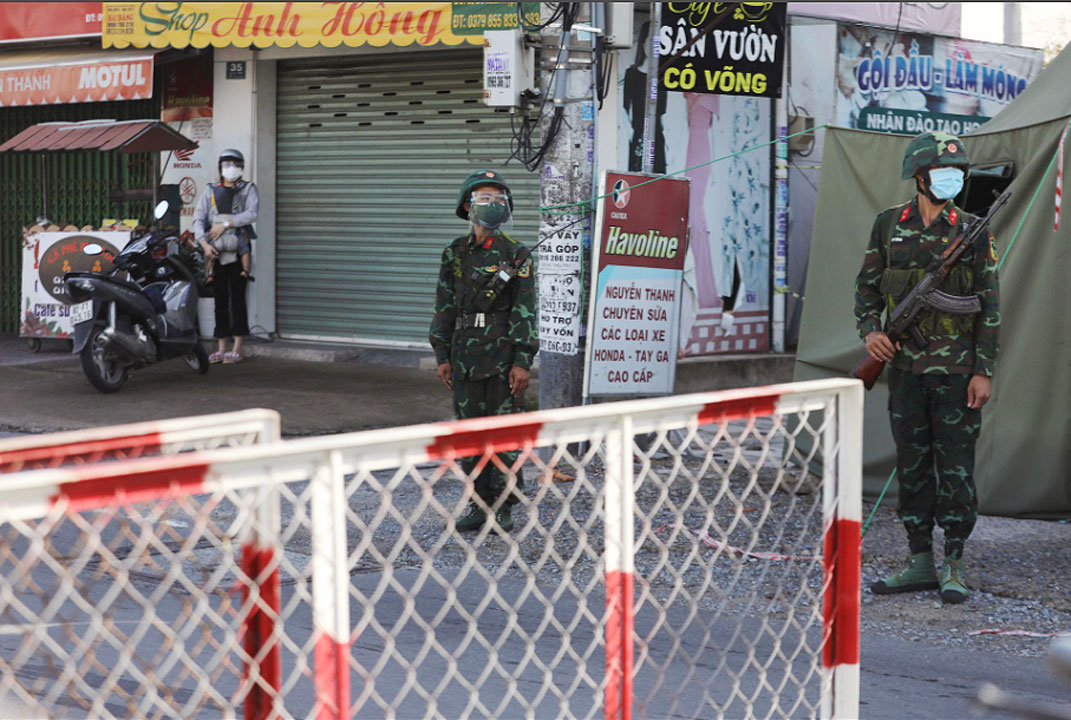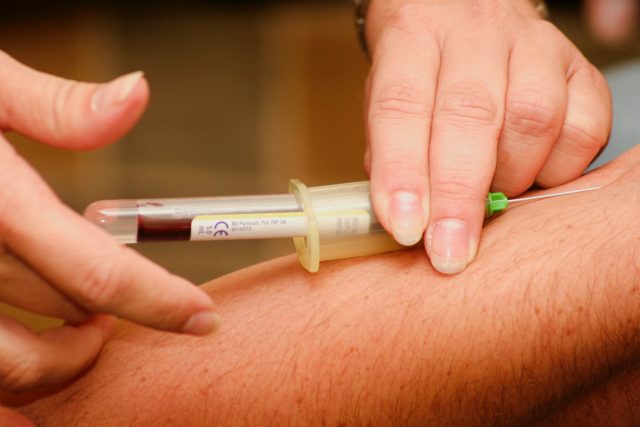PATRICK Mahomes passed for 337 yards and three touchdowns, all in the second half, as the host Kansas City Chiefs didn’t lead until the fourth quarter, but edged the Cleveland Browns 33-29 on the first Sunday of the National Football League (NFL) season.
Cleveland punter Jamie Gillan failed to handle a snap with 8:42 left in the fourth quarter, and the Chiefs tackled him for a fourth-down loss at the Browns’ 15. Mahomes connected with Travis Kelce three plays later for an 8-yard touchdown and the winning score with 7:04 remaining.
The rally gave the Chiefs their 15th consecutive September victory as they began their quest for a third straight American Football Conference (AFC) title. Mahomes finished 27-of-36 while also throwing an 11-yard TD to Kelce and a 75-yard scoring bomb to Tyreek Hill.
Baker Mayfield played brilliantly, passing for 321 yards while going 21-of-28 to fuel the Browns, who lost at Kansas City in the divisional round of the AFC playoffs last season.
CARDINALS 38, TITANS 13
Chandler Jones notched a career-high five sacks and Kyler Murray threw four touchdown passes as Arizona dominated Tennessee in Nashville, Tenn.
Jones, who missed the last 11 games of 2020 with a biceps injury, almost single-handedly dictated the game’s tempo with incessant pressure on Tennessee quarterback Ryan Tannehill. Jones logged three sacks and a forced fumble before the first quarter ended.
Murray completed 21-of-32 passes for 289 yards and added a touchdown on the ground, while Arizona’s running back tandem of Chase Edmonds and James Conner combined for 116 yards on 28 attempts.
TEXANS 37, JAGUARS 21
Tyrod Taylor passed for 291 yards, 229 in the first half, and host Houston matched its interceptions total from all of last season in the victory over Jacksonville.
Taylor, making his first start for the Texans in place of inactive three-time Pro Bowl quarterback Deshaun Watson, excelled with his blend of elusiveness and daring. He finished 21-of-33 and threw two touchdown passes to pace a Texans offense that amassed 449 yards.
Jaguars quarterback Trevor Lawrence made his NFL debut and finished with 332 yards passing and three touchdowns in addition to throwing three interceptions.
SEAHAWKS 28, COLTS 16
Russell Wilson threw four touchdown passes, two to Tyler Lockett, as Seattle rolled past host Indianapolis.
Wilson quickly took to new offensive coordinator Shane Waldron’s system, completing 18-of-23 for 254 yards, posting a near-perfect passer rating of 152.3 (maximum is 158.3).
Carson Wentz, acquired by the Colts in an offseason trade with Philadelphia, was 25-of-38 for 251 yards and two touchdowns, both to Zach Pascal.
STEELERS 23, BILLS 16
Dominant defense and a special-teams score helped Pittsburgh overcome a sleepy first half and knock off host Buffalo.
The Steelers’ special teams crashed a defensive struggle with 9:45 left. Safety Miles Killebrew blocked Matt Haack’s punt at the Buffalo 10-yard line, and Ulysees Gilbert III scooped up the ball for Pittsburgh’s 20th unanswered point, all in the second half.
Steelers linebacker T.J. Watt had two sacks, and Bills quarterback Josh Allen completed 30-of-51 passes for 270 yards and a touchdown. Ben Roethlisberger rarely attacked downfield and completed 18-of-32 passes for 188 yards.
BENGALS 27, VIKINGS 24
Joe Burrow found C.J. Uzomah with a 32-yard pass on fourth-and-short late in overtime to set up Cincinnati’s victory against visiting Minnesota.
Two plays after Burrow’s pass, rookie Evan McPherson nailed a 33-yard, game-winning field goal for the Bengals as time expired.
Burrow was sharp in his return from a torn ACL, completing 20-of-27 passes for 261 yards and two touchdowns. Joe Mixon rushed for 127 yards and a touchdown on 29 carries.
49ERS 41, LIONS 33
Jimmy Garoppolo rebounded from a first-snap fumble to throw for 314 yards and Trey Lance tossed a touchdown pass on his first NFL attempt as San Francisco held off host Detroit.
Trent Sherfield and Deebo Samuel caught TD passes, Elijah Mitchell and JaMycal Hasty rushed for scores after Raheem Mostert got injured, and Dre Greenlaw returned a Jared Goff interception 39 yards for a score, helping the 49ers race to 38-10 lead.
Detroit got a final possession after Samuel’s fumble with a minute remaining, but stalled on downs at the San Francisco 24 in the final seconds.
CHARGERS 20, WASHINGTON 16
Making his first start in a season opener, Justin Herbert picked up where he left off last year for Los Angeles. The second-year pro completed 31-of-47 passes for 337 yards and a touchdown, leading the Chargers past Washington in Landover, Md.
Herbert’s favorite target was Keenan Allen, who finished with nine catches for 100 yards. Even after he was intercepted deep in Washington territory in the fourth quarter, Herbert got another chance when LA’s defense got the ball back on a fumble on the next play.
Three plays later, Herbert hit Mike Williams for a 3-yard touchdown, giving LA the winning score with 11:21 left, and Los Angeles coach Brandon Staley won his NFL head-coaching debut.
PANTHERS 19, JETS 14
Sam Darnold had a solid debut with host Carolina, and the Panthers’ defense ruined New York rookie Zach Wilson’s first NFL game.
Darnold had a passing touchdown and rushing touchdown against his former team, with 279 yards passing by going 24-of-35 with no interceptions. He also made good use of running back Christian McCaffrey, the Carolina standout who was limited to three games last season because of injuries. McCaffrey was Carolina’s leading rusher with 98 yards on 21 carries.
Wilson, the No. 2 overall selection in the 2021 NFL Draft, ended up 20-of-37 for 258 yards and two touchdowns, with an interception.
EAGLES 32, FALCONS 6
Jalen Hurts passed for 264 yards and three touchdowns to help Philadelphia romp past host Atlanta.
Heisman Trophy winner DeVonta Smith caught six passes for 71 yards and one touchdown in his NFL debut, and the Eagles outclassed the Falcons in a matchup featuring two first-time head coaches in Philadelphia’s Nick Sirianni and Atlanta’s Arthur Smith.
Dallas Goedert and Jalen Reagor also caught scoring passes and Kenneth Gainwell ran for a touchdown for Philadelphia. Miles Sanders had 113 scrimmage yards (74 rushing, 39 receiving), and Hurts completed 27-of-35 passes and rushed for 62 yards.
SAINTS 38, PACKERS 3
Jameis Winston tied a career-high with five touchdown passes and New Orleans intercepted Aaron Rodgers twice in the Saints’ victory in Jacksonville, Florida.
The game was moved to Jacksonville from the Superdome after Hurricane Ida damaged New Orleans two weeks ago.
Winston made his first start for the Saints and passed for just 148 yards, but he completed 14-of-20 passes with no interceptions. Rodgers completed 15-of-28 passes for 133 yards and a 36.8 passer rating before being replaced by Jordan Love in the fourth quarter.
BRONCOS 27, GIANTS 13
Teddy Bridgewater threw for 264 yards and two touchdowns, Melvin Gordon finished it off with a 70-yard TD, and Denver beat New York in East Rutherford, NJ.
Bridgewater delivered an accurate performance in his Denver debut, completing 28-of-36 passes and helping the Broncos maintain possession for just over 35 minutes. Denver linebacker Von Miller recorded two sacks, and the NFL’s active sack leader raised his total to 108.
New York quarterback Daniel Jones completed 22-of-37 passes for 267 yards. He added a rushing TD with no time remaining, but also fumbled deep in Denver territory late in the third quarter.
DOLPHINS 17, PATRIOTS 16
Tua Tagovailoa passed for 202 yards and a go-ahead three-yard touchdown to rookie Jaylen Waddle as Miami spoiled quarterback Mac Jones’ NFL debut with a win over host New England.
Waddle, the No. 6 overall pick in this year’s draft, grabbed his first career touchdown catch with 10:51 remaining in the third quarter to put Miami on top for good at 17-10. Nick Folk’s 42-yard field goal with 2:50 left in the third and another from 33 yards out at 10:36 of the fourth pulled New England within 17-16.
Tagovailoa, who also had a rushing touchdown, finished 16-for-27 passing and was also intercepted by New England defensive back Jonathan Jones with 8:07 to play in the fourth. Mac Jones and the Patriots drove 41 yards before running back Damien Harris lost a fumble at the Dolphins’ 11-yard line.
RAMS 34, BEARS 14
Matthew Stafford completed 20 of 26 passes for 321 yards and three touchdowns in his team debut to lead host Los Angeles to a win over Chicago Bears on Sunday night.
Van Jefferson, Cooper Kupp and Robert Woods each hauled in touchdown passes for Los Angeles (1-0). Darrell Henderson, Jr. added 70 yards and a touchdown on the ground.
David Montgomery had 16 carries for 108 yards and a touchdown to lead the offensive attack for Chicago (0-1). Andy Dalton completed 27 of 38 passes for 206 yards and an interception, and rookie Justin Fields completed both of his pass attempts and rushed for a 3-yard touchdown in limited action during his NFL debut. — Reuters
















